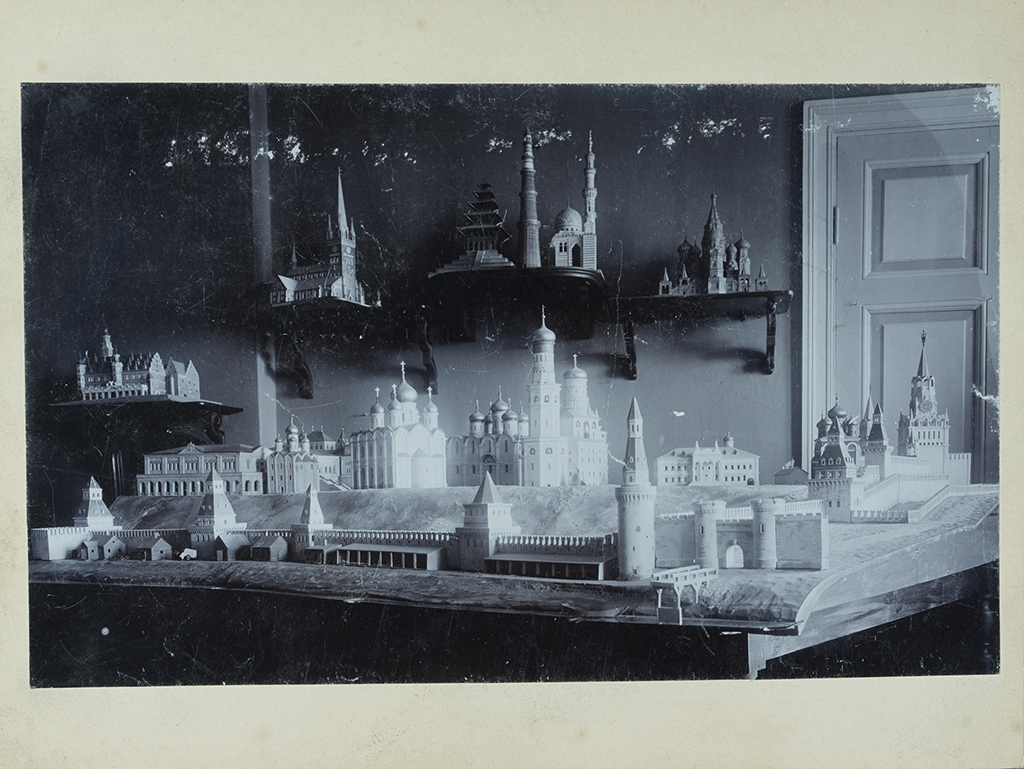At a time when long-distance travel was rare, faraway regions could be brought to people through the means of art and, later, photography. One way to examine culture and architecture was by studying scale models. They also afforded an opportunity to look into the past, especially in the case of historical locations that had not survived for posterity. As our object of the month for October, we present a scale model of the classical era Tower of the Winds from the Sederholm collection I catalogued last spring.

A general’s passion
Lieutenant General Carl Robert Sederholm (1818–1903) was well versed in philosophy of religion, archaeology and history of architecture. In Finland, he is best known as a religious scholar. While working as a military engineer on the shores of the Black Sea, among other locations, he had seen many archaeological finds and had been deeply impressed. This keen interest led him to scale models in his retirement years. The collection he commissioned included over 50 scale models of buildings or groups of buildings, some of which still exist. One of them is the small octagonal Tower of the Winds from the classical era Roman Agora in Athens, one of the most significant forums of public power and trade in ancient Greece.
Sederholm’s models depict historically important buildings, such as churches, mosques and castles as well as Greek, Roman, Egyptian and Asian temples mostly on a scale of 1:150. Some of the models originally included magnificent painted panorama backgrounds, the whereabouts of which are currently unknown. The models were constructed by carpenters Svistunoff from Suomenlinna and Wirtanen from Helsinki. Ornament painter Josef Löf painted the models. There is no certainty over the painter of the panorama backgrounds, but it has been suggested that the painter could be the artist and officer Eugen Taube (1869–1913). Taube was married to General Sederholm’s second daughter.
C. R. Sederholm displayed his beloved scale model collection in his home in Kruununhaka, Helsinki. At the time of his death in 1903 some of the models were being exhibited in the Ateneum Art Museum. What happened to the models subsequently is a bit unclear. Somehow they eventually ended up in the possession of the discipline of art history at the University of Helsinki and, from there, they were moved to the Helsinki University Museum in spring 2019. Over the years, some models and parts of models have unfortunately disappeared but the remaining ones continue to fascinate people. The University Museum collection also includes photographs of the models from the early 1900s. The photographs show them in all their glory.

Tower of the Winds
The classical Agora scale model ensemble included a base, a simple background painting and several buildings: Temple of Hephaestus, Tower of the Winds, a stoa portico, a round tholos temple, another temple building behind that, three staircases and some figurines.
The actual Tower of the Winds was built in Athens in the 1st century BCE. It functioned as a weather vane, a sundial and a water clock. The top of the building features a frieze depicting the eight wind deities, Anemoi, of Greek mythology. The tower depicts four of them as males: the north wind Boreas, the northeast wind Kaikias, the east wind Eurus and the northwest wind Skiron. The remaining four are female characters: the southeast wind Apeliotes, the south wind Notos, the southwest wind Lips and the west wind Zephyrus.
The majority of the historical Agora in contemporary Athens is in ruins, so Sederholm used the publications and other research sources available at the time in the reconstruction of the scale model ensemble. More recent research and archaeological excavations have provided a more exact understanding of the ancient form of the area, so this collection of models does not quite reflect actual reality. It includes conjecture and artistic licence. However, the Tower of the Winds is well preserved and continues to be a popular tourist attraction.
On the trail of the building scale models
The archive material related to Sederholm’s scale models in the University Museum sheds some light on the past of the models. It reveals that Sederholm bequeathed the collection to the Finnish Art Society. Some models were in fact exhibited in the Ateneum, which at the time was home to the Finnish Art Society and the Finnish Society of Crafts and Design. However, for an unknown reason, the models were moved from the Ateneum to the attic of Villa Hakasalmi possibly as early as 1912 or in the 1920s. At the time, Villa Hakasalmi was owned by the Design Museum. Later, in conjunction with the renovation of Villa Hakasalmi that had come into the ownership of the Helsinki City Museum in 1952, the models were donated by the Finnish Society of Crafts and Design to the department of art history at the University of Helsinki. Some of the models were kept for educational purposes in the Main Building of the University, while others were placed in storage.
When the comprehensive renovation of the Main Building of the University of Helsinki was planned this spring, the models came into the possession of the University Museum in conjunction with the relocation of the discipline of art history. Quite an adventure over the last hundred years or so, wouldn’t you say!

The models that were displayed in the Main Building have already been catalogued in the University Museum collections, as have the old photographs and archive material. Examine the model collection on Finna.
Anna Luhtala, Curator
Translation: University of Helsinki Language Services.
Sources:
Sederholm’s scale model building collection, archive material, Helsinki University Museum
Sederholm, Carl Robert. Suomalaiset kenraalit ja amiraalit Venäjän sotavoimissa 1809–1917 (‘Finnish generals and admirals in Russian armed forces 1809–1917’), online publication. Studia Biographica 7. Helsinki: Suomalaisen Kirjallisuuden Seura (Finnish Literature Society) 2006 – (accessed 12 August 2019) Permanent identifier of the publication: URN:NBN:fi-fe2018111948426; permanent identifier of the article: http://urn.fi/urn:nbn:fi:sks-ken-000373
